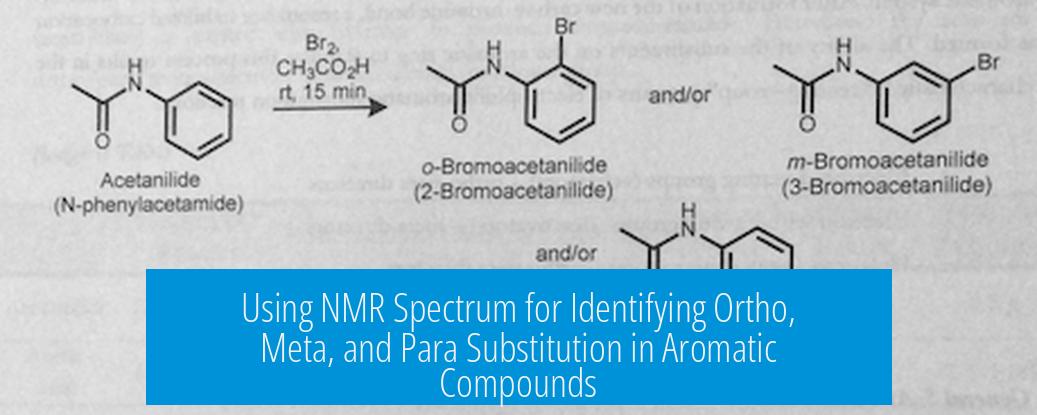Using NMR Spectrum to Identify Ortho, Meta, and Para Substitution
NMR spectroscopy distinguishes ortho, meta, and para substitution on aromatic rings by analyzing splitting patterns and the number of proton signals in the aromatic region. This method relies on molecular symmetry and proton coupling effects to reveal the substitution pattern.
Splitting Patterns in Aromatic Proton Signals
- Para Substitution: Exhibits two doublets in the aromatic region, each integrating for two protons. This arises from symmetrical proton environments on opposite sides of the ring.
- Ortho Substitution: Shows four peaks: two doublets and two doublets of doublets, each integrating for one proton. This complex pattern reflects non-equivalent adjacent protons affected by coupling.
- Meta Substitution: Displays a singlet, two doublets, and a triplet, each integrating for one proton. This pattern arises due to the distinct environments caused by meta substitution.
Impact of Molecular Symmetry with Identical Substituents
When two identical substituents, like chlorines, are positioned on the benzene ring, proton environments and NMR signals vary with substitution type:
| Substitution Type | Number of 1H NMR Signals | Reason |
|---|---|---|
| Ortho-dichlorobenzene | Two signals | Two magnetically distinct proton types due to substitution pattern |
| Meta-dichlorobenzene | Three signals | Three distinct proton environments attributable to meta positions |
| Para-dichlorobenzene | One signal | Equivalent protons caused by molecular symmetry |
Drawing these molecules helps predict the splitting and signal count without focusing heavily on exact chemical shifts.
Considerations for Different Substituents
If the two substituents differ, analysis focuses more on the splitting patterns caused by neighboring protons. Key questions include:
- How many adjacent protons are near the proton of interest?
- What splitting pattern results from coupling with these neighbors?
Generally, coupling constants (J values) for three-bond couplings dominate, but sometimes long-range four-bond couplings occur with small J values (1–3 Hz), distinguishable with careful analysis.
Key Takeaways
- Para substitution produces two doublets in the aromatic region, integrating for two protons each.
- Ortho substitution shows four peaks: two doublets and two doublets of doublets, each for one proton.
- Meta substitution presents a singlet, two doublets, and a triplet, all one proton each.
- Molecular symmetry influences the number of observed signals, especially with identical substituents.
- Different substituents require detailed splitting analysis based on adjacent proton coupling.





Leave a Comment